Original URL: https://www.theregister.com/2014/01/03/ten_classic_calcutors/
Ten classic electronic calculators from the 1970s and 1980s
Lo-tech delights for button-pushers worldwide
Posted in Personal Tech, 3rd January 2014 10:00 GMT
Retro roundup Until sometime in the early 1980s, when you reached secondary school you were handed a slim book full of numbers during a maths lesson and taught how to use log tables. Sines, cosines, tangents, square roots - they were all in there too. While it made a change from long division, it caused its own share of headaches.
But, to a nation of people for whom pounds, shillings and pence were still a fresh memory, perhaps mental gymnastics weren’t too tricky for many of us.
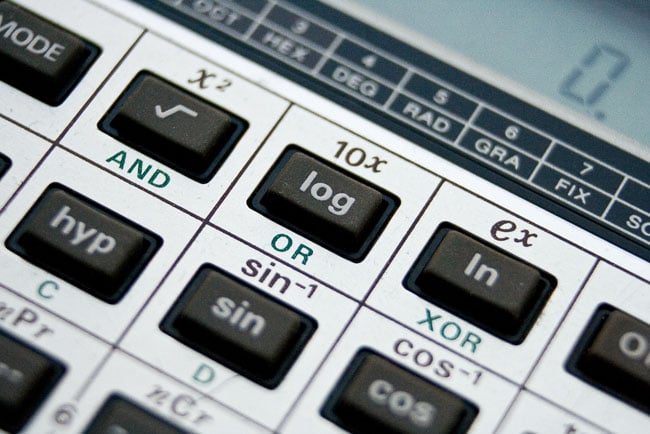
Source: Mark Ramsay
Yet throughout the 1970s and 1980s, modern electronics were making calculators a practical device for more and more people. No longer were electro-mechanical adding machines tethered to a desk and a mains cable. They had become pocket-sized gadgets that at first enchanted, then caused alarm at the prospect of cheating, and finally became accepted - and maybe dumbed some of us down a little in the process.
Here, then, in chronological order, are ten of the fondest remembered classic calculators. If we've not included yours, do let us know in the comments.
Sinclair Executive (1972)

Clive Sinclair wasn’t the first person to bring out a handheld electronic calculator - Sharp produced one in 1970, as did a few other Japanese companies - but he did make one of the first slim models. The Executive was also the first calculator in the world to be powered by button cells, a trick achieved by pulsing them on and off to provide better battery life. With LCDs only just invented, power guzzling LEDs were the only viable display option in 1972.

Source: MaltaGC
At £80 the Executive was not a calculator for everyone - the more cost-conscious could buy the 1973 Sinclair Cambridge in kit form if they wanted to save money.
To many Brits, Sir Clive is considered the inventor of the pocket calculators. It’s not true, but he certainly did a lot to popularise them here in Blighty.
Sinclair Cambridge Programmable (1975)

Sinclair’s calculator range expanded tremendously in the early 1970s, with many models available both pre-built and in slightly cheaper kit form. The Cambridge Programmable - sold in the US under the Radio Shack brand - was limited to just 36 steps, and some of its trigonometry functions were notoriously inaccurate.
Using the same basic design as other Cambridge models, this one wasn’t able to run on the proposed AA batteries, resulting in a 9V cell-accommodating ugly bulge at the back that, in retrospect, may well be the first in a long line of Sinclair quirks.
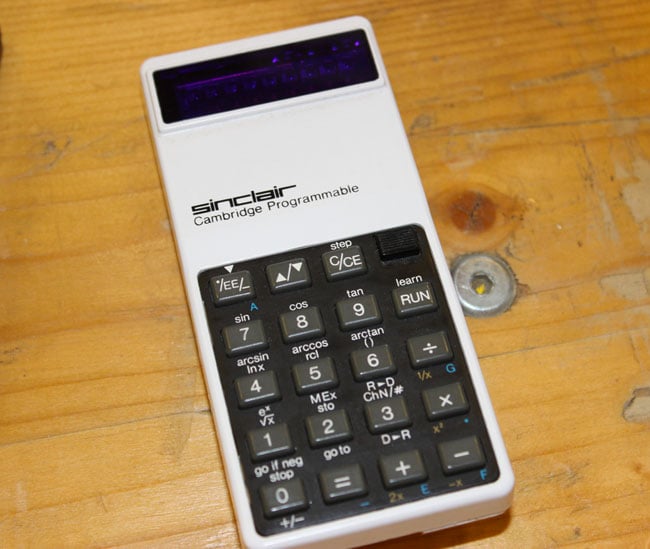
Source: Ian Dixon
Supplied with a large library of programs in four paper volumes, later versions of the Cambridge Programmable, such as the 1978 Enterprise Programmable, allowed for much larger programs and better accuracy, but by then the Japanese and their LCDs were on the way to world domination.
Commodore F4146R (1976)

Just a year before the arrival of the Commodore PET microcomputer, Commodore Business Machines (CBM) was one of the most popular calculator brands, with around 30 per cent of the UK market, and a factory in England putting them together.
It won’t win any prizes for beauty, but the keyboard on the 4146 and its siblings was uncramped, and the recessed display featured 12 digits: ten for numbers plus two extra for exponents.
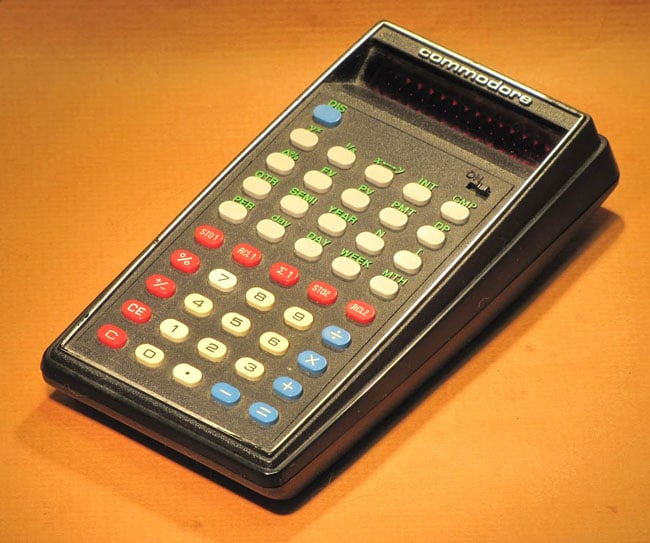
Source: Bob Wolfson
Some designs were made in two versions: an SR prefix instead of the F meant ‘Slide Rule’, or scientific, rather than ‘Financial’. In the days of Hire Purchase, the dedicated functions on a calculator like this made it simple for a sales rep to work out how much you’d have to pay for your stylish new telly with sliding doors.
Texas Instruments TI-59 (1977)

The TI-59 was a solid beast, engineered in dark brown plastic with a red ten-digit LED display. It was also a pretty powerful and flexible programmable calculator, with more memory than its main HP competitor.
Programs could be assigned to one of the alpha keys, so entering a number and pressing one would give you your result. It was even possible to use programs on the supplied memory model as subroutines to your own code.
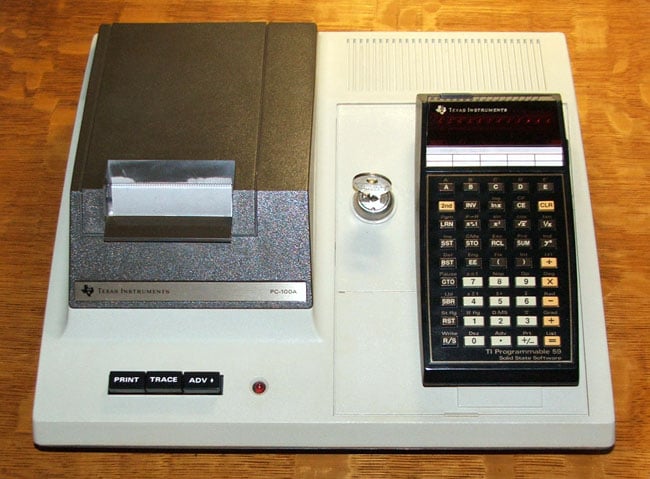
Source: John Crane
But perhaps one of the most novel things was the built-in card reader, which accepted slim, flexible cards with a magnetic stripe on the back, which could be used to store and retrieve your programs, or share them with others. Space on the other side of the card provided for notes or labels, to be viewed when it was in the storage slot below the screen.
Texas Instruments TI-35 (1979)

If you didn’t have a Casio calculator around this time, there’s a pretty good chance that you had a Texas Instruments one instead. Mostly known now for chips, back then the firm also produced the Speak and Spell and other educational devices, as well as calculators.
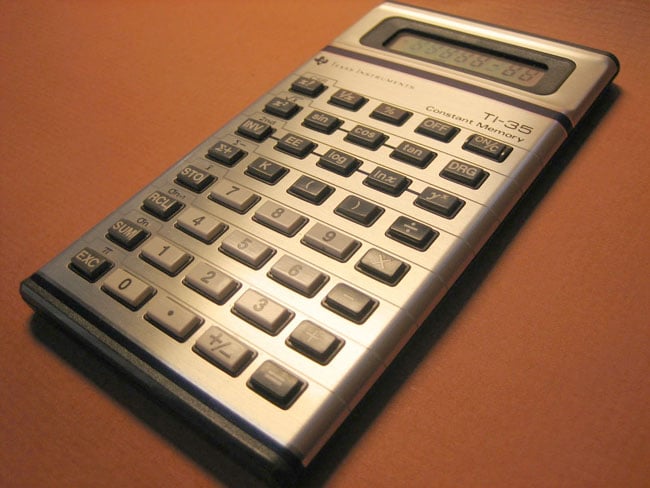
Source: Bob Wolfson
The TI-35 was a “slimline” LCD model, with an eight-character display - by 1979 LEDs were, like the Callaghan government, on their way out. With a modest range of functions which nevertheless included basic stats, and a “Constant Memory” which retained values even when the device was turned off, this was a pretty competent calculator, with a very distinct feel to the keys, which felt as if they were hinged at the top.
Hewlett-Packard HP-41C (1979)

If the all-singing, all-dancing card-reading TI-59 was the Fred Astaire of programmable calculators, then the HP-41C was Ginger Rogers, doing it backwards in Reverse Polish Notation. It wasn’t the first calculator to use the method - previous HP models had it, and so did one of the early Sinclairs, too - but it also added a world first alphanumeric display, and was HP’s first LCD model into the bargain.
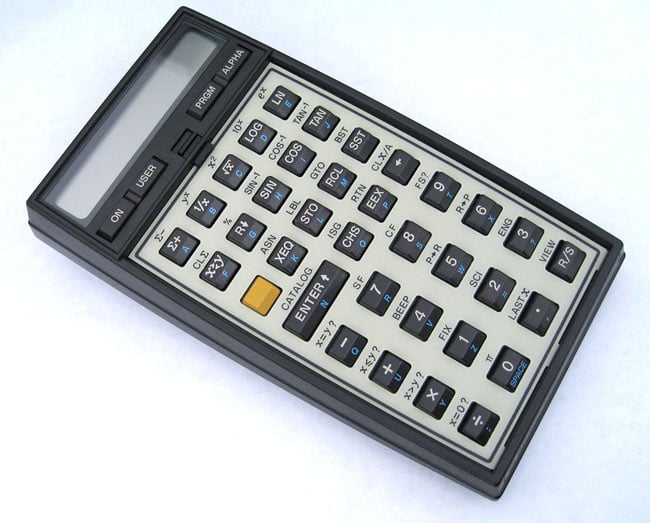
Source: Twylo
The display made programming much simpler, and you could even reassign the keys, with blank templates available, allowing pre-programmed calculators to be handed to users for specific tasks. Expansion slots on the top edge allowed for pre-programmed memory to be added, along with peripherals such as a printer and a magnetic card reader which could read and translate cards from the earlier HP-67.
Casio FX-81 (1981)

The cream coloured FX-81 and its close relative, the FX-82, were almost ubiquitous in schoolrooms in the early to mid-1980s, whether you were in the O-level or the CSE (Certificate of Secondary Education) streams.
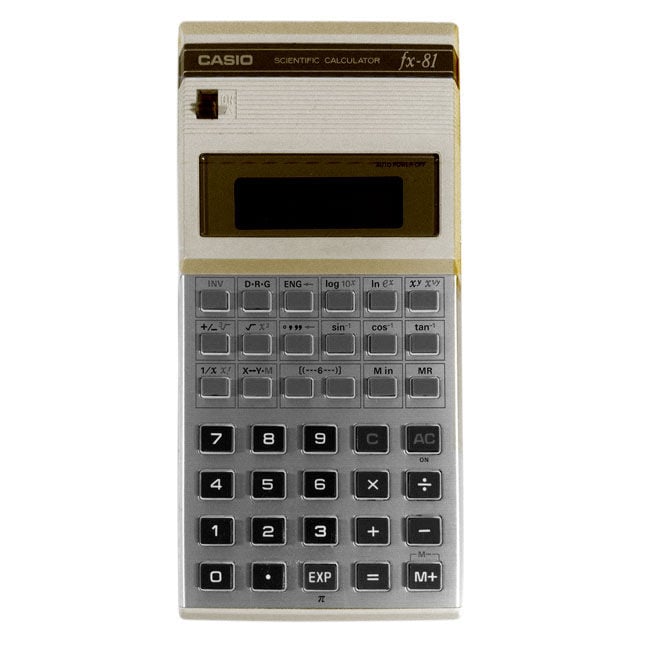
With an eight-digit LCD display and a chunky top end that held the two AA batteries, these were solid school maths workhorses. Casio churned out millions of these and of similar looking models, including some for other people - the Boots 527 scientific calculator was a Casio FX-7 with a different badge on it. If you were a bit of a swot, you might go instead for the FX-100, with those all-important extra two digits.
Casio FX-550 (1981)

In the early 1980s, calculators were booming, but so were concerns about what they’d mean for numeracy – and for maths exams. Within a few years, most examination boards would be allowing people to use calculators for O levels and for CSEs. If you were heading for A level Maths or Physics, though, a humble FX-81 wouldn’t cut it.
You wanted something with ten digits of precision, and plenty of functions for statistics and trigonometry. The FX-550 had all of those - and even a random number generator. A slim, metal-clad model that came with a flip-cover plastic wallet, the FX-550 saw countless students through their exams and into university.
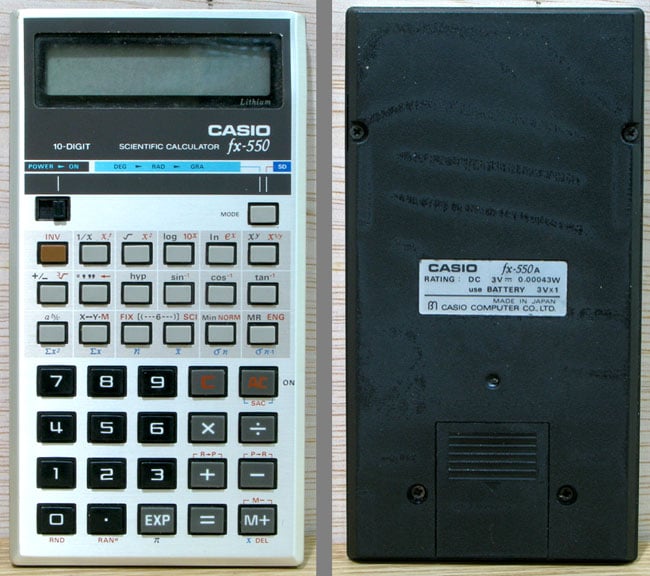
Source: Casio Calculator Collectors
It didn’t have the programmable functions of some fancier models, but for many of us in the 1980s, this and similar models were an essential tool at school or college.
Casio FX-7000G (1985)

We make no excuse for including another Casio. By the mid 1980s, they were just about everywhere, with a few hardcore techies plumping for HP.
If you start at the bottom, the FX-7000G looks much like any of the company’s other models - but the screen at the top was the game changer. A 96 x 64 pixel dot-matrix display, it could work in line mode, with thirteen digits, or graphics mode. There was a series of built in graphs, or you could program it to display your own, and even display the results of stats functions graphically.
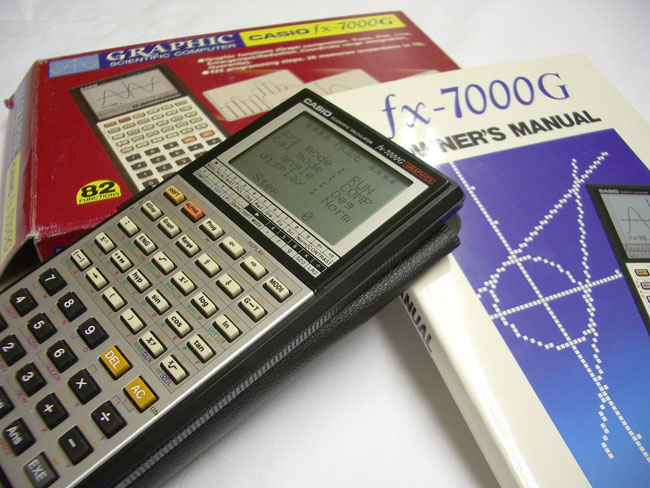
Source: ML5
Up to ten programs could be stored in individual slots, though there was a total of less than half a kilobyte of memory. The specs may sound puny now, but the top resolution of the BBC Micro and Research Machines 380Z micros found in schools around the time were 640 x 256 and 320 x 192, respectively. And neither would fit in your pocket.
Hewlett-Packard HP-28C (1987)

The HP-28C retained the Reverse Polish Notation beloved of some HP users, and added to it the RPL programming language - albeit on a device that had no way of storing programs permanently.
With 2KB of memory, and a four-line LCD screen, the HP-28C also had another novelty: flip open the cover, and there were two keyboards, not one, with the left half providing alphabetic entry.
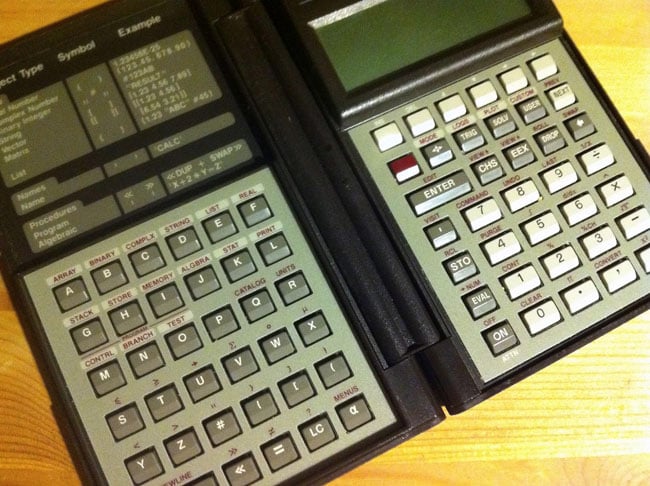
Source: Oliver Bildsheim
On top of all that, the HP-28 was also the first calculator with an algebra system, making it possible to work with whole new types of problems, arranging or solving them far more simply than before. The following year saw an update, the 28S, which added lots more memory.
RPL carried on into the succeeding range, the HP-48 series, as well, and the company makes calculators that use Reverse Polish notation to this day. ®
Calcnote
Read all about Reverse Polish Notation, via BODMAS and the like, here.